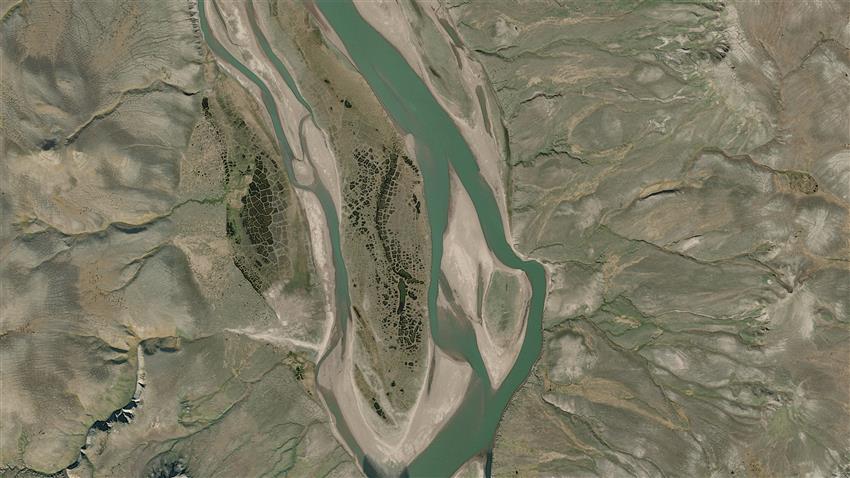Serpent of the North
The scene is focused on the Thomsen River, which flows from south to north across Aulavik National Park (ANP) on Banks Island, Northwest Territories. The island is the fifth largest in Canada, and ANP is one of the most geographically isolated parks in North America. Its name in Inuvikaktun translates into the "place where people travel," and human occupancy, while now confined to only 104 permanent residents (), all living in Sachs Harbour, has been in evidence for over 3400 years. The park is home to most of the world's muskox population and important migratory bird breeding sanctuaries, while the Thomsen River is navigable by canoe for much of its extent.
About the visual art
- Location: Thomsen River, Aulavik National Park of Canada on Banks Island, Northwest Territories
- Company: Esri Canada Limited
The braided fluvial channels at the centre of the image take on the appearance of a snake, fish, or serpent-like creature with the area just north of the snout representing the creature's eye. Also clearly visible are characteristic features of "patterned ground" which form a tessellation of polygons that result from freezing and thawing of the surface. The darker coloured interiors of the polygons fill with sedge mats creating "scale-like" features running down the centre, further giving the impression of a scaled creature, hence the "serpent of the north."
This image uses a Maxar WorldView-2 Vivid basemap from , that has been mosaiced, pan-sharpened and colour-balanced with a ground resolution of 0.31 metres. The image was obtained from Esri's World Imagery Service.
Alex Miller discovered the image location; Jonathan Van Dusen tiled, extracted and re-mosaicked the final scene with input from Brent Hall and Alex Miller; Brent Hall wrote the description with input from Chris North and Alex Miller; Kyle Murdoch named the submission; and Genevieve Lavoie assisted with the work.
